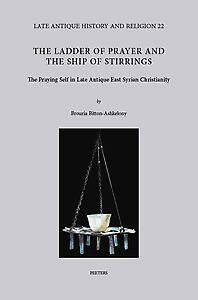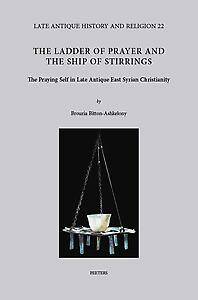
- Afhalen na 1 uur in een winkel met voorraad
- Gratis thuislevering in België vanaf € 30
- Ruim aanbod met 7 miljoen producten
- Afhalen na 1 uur in een winkel met voorraad
- Gratis thuislevering in België vanaf € 30
- Ruim aanbod met 7 miljoen producten
Zoeken
The Ladder of Prayer and the Ship of Stirrings
The Praying Self in Late Antique East Syrian Christianity
B Bitton-Ashkelony
€ 201,95
+ 403 punten
Omschrijving
Doubts about sacrifices, prayers, fate, and providence in the second- to fifth-century Mediterranean world produced new concepts of individual prayer for Christians and non-Christians alike. The Ladder of Prayer and the Ship of Stirrings explores the discourse on the praying self as an ascetic way of life, as an aspect of interiority, and as a path to the divine in Late Antique Eastern Christianity. It deals with the transposition of Greek ascetic literature - mainly the writings of Evagrius Ponticus, Abba Isaiah, Mark the Monk, and the Apophthegmata patrum - into East Syrian thought, and its assimilation with indigenous features. Specifically, the book probes the emergence of different sorts of prayer as a pivotal part of the profound religious shifts and cultural developments that unfolded in Late Antique Eastern Christianities. The chronological scope of this study ranges from the second-to fifth-century cultural world of sophists and philosophers, Iamblicus, Porphyry and Proclus, up to the East Syrian mystical authors in the fifth-eighth centuries, among them John of Apamea, Isaac of Nineveh, Dadisho' Qatraya, Shem'on d-Taybutheh, John of Dalyatha, and Joseph Hazzaya. The book presents how these figures incorporated this literary legacy into their teachings and melded it with indigenous Syriac spirituality.
Specificaties
Betrokkenen
- Auteur(s):
- Uitgeverij:
Inhoud
- Aantal bladzijden:
- 282
- Taal:
- Engels
- Reeks:
- Reeksnummer:
- nr. 22
Eigenschappen
- Productcode (EAN):
- 9789042939189
- Verschijningsdatum:
- 7/08/2019
- Uitvoering:
- Hardcover
- Formaat:
- Genaaid
- Afmetingen:
- 163 mm x 246 mm
- Gewicht:
- 612 g

Alleen bij Standaard Boekhandel
+ 403 punten op je klantenkaart van Standaard Boekhandel
Beoordelingen
We publiceren alleen reviews die voldoen aan de voorwaarden voor reviews. Bekijk onze voorwaarden voor reviews.








